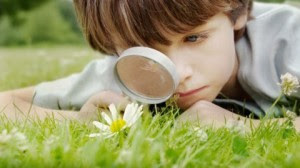Assessment is defined as the process of evaluating the quality of learning and it is imperative that inquiry give teachers the opportunity to determine what students are learning, recognize when they need help, and identify appropriate next steps to take (Harlen, p. 87).
There are two key forms of assessment: formative assessment (assessment is carried out for the purpose of helping teaching and learning) and summative assessment (assessment is carried out in order to provide a report after a specific time period).
Formative Assessment
Inquiry teaching specifically warrants formative assessment as the teacher must understand the skills and knowledge that the students have developed prior to deciding what is required to help the progress of the student. It is a necessity that the teacher consistently gathers data to determine the next learning steps for their students.
Inquiry teaching specifically warrants formative assessment as the teacher must understand the skills and knowledge that the students have developed prior to deciding what is required to help the progress of the student. It is a necessity that the teacher consistently gathers data to determine the next learning steps for their students.
Methods of Gathering Information
There are four primary methods in which teachers gather information from their students:
There are four primary methods in which teachers gather information from their students:
- Observing students engaged in inquiry (e.g., using a mental or written checklist)
- Asking questions designed to probe reasons and understanding (e.g., ask open-end or person-centred questions demonstrates whether students understand concepts)
- Looking closely at the evidence from class work (e.g., drawings, constructions, or written work illustrate students' thinking and/or understanding of ideas)
- Setting special tasks or assignments (e.g., hands-on activities and written assignments increase assessment opportunities)
All methods of information gathering may be used as evidence for summative purposes. The main difference between formative and summative assessment is how it is used. Formative assessment is used for immediate feedback into teaching and learning, while summative assessment is used to give others information about the students' progress regarding their development (Harlen, p. 96). Although both assessments are significant methods of measuring student achievement, when considerable emphasis is placed upon grades, it can obscure assessment for formative purposes.
Source: Chapter 11: Assessment in the Inquiry Classroom (pp. 87-97) written by Wynne Harlen in Foundations Vol. 2: An Introduction to Inquiry: Thoughts, Views, and Strategies for the K-5 Classroom published by the National Science Foundation (2000).









